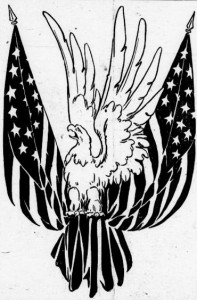Overview
Adopted from: “Whose ‘More Perfect Union’?” Role Play from Zinn Education Project
Having convention experience, students should now be ready to examine the U.S. Constitution, keeping in mind the social perspective. This lesson provides questions to get students to think critically about their experiences as well as the Constitution.
Oregon Common Core State Standards
Language Arts Standards:
- ELA.RH.6-8.1 Cite specific textual evidence to support analysis of primary and secondary sources.
- ELA.RH.6-8.3 Identify key steps in a text’s description of a process related to history/social studies (e.g., how a bill becomes law, how interest rates are raised or lowered).
- ELA.RH.6-8.4 Determine the meaning of words and phrases as they are used in a text, including vocabulary specific to domains related to history/social studies.
- ELA.RH.6-8.5 Describe how a text presents information (e.g., sequentially, comparatively, causally).
- Additional standards listed in PDF Download
Social Studies Standards:
- Historical Knowledge 8.2. Evaluate continuity and change over the course of U.S. history by analyzing key people and the Constitutional Convention, the age of Jefferson, the Industrial Revolution, Westward Expansion, and the Civil War.
- Historical Thinking 8.6. Use and interpret documents and other relevant primary and secondary sources pertaining to U.S. history from multiple perspectives.
- Historical Thinking 8.7. Analyze evidence from multiple sources, including those with conflicting accounts about specific events in U.S. history.
- Historical Thinking 8.8. Evaluate information from a variety of sources and perspectives.
- Historical Thinking 8.9. Construct or evaluate a written historical argument demonstrating an understanding of primary and secondary sources.
- Civics and Government 8.14. Explain rights and responsibilities of citizens.
- Civics and Government 8.15. Contrast the impact of the Articles of Confederation as a form of government to the U.S. Constitution.
- Civics and Government 8.18. Examine and analyze important U.S. documents, including (but not limited to) the Constitution, Bill of Rights, and 13th-15th
- Civics and Government 8.21. Analyze important political and ethical values such as freedom, democracy, equality, and justice embodied in documents such as the Declaration of Independence, the U.S. Constitution, and the Bill of Rights.
- Social Science Analysis 8.25. Critique data for point of view, historical context, distortion, or propaganda and relevance.
- Social Science Analysis 8.26. Examine a controversial event, issue, or problem from more than one perspective.
- Additional standards listed in PDF Download
Materials
- Copy of the U.S. Constitution, one for each student
- “Who Really Won?” activity sheet
- Access to the Internet (optional)
- Copies of the Virginia Plan (optional)
Key Vocabulary
- Articles of Confederation: Oregonian (1915)
- Compromise: Oregon Spectator (1846)
- Constitutional Convention: West Shore (1888)
- Democracy: Rogue River Courier (1918)
- Electoral College: Oregonian (1912)
- Federal / Federalist: Oregonian (1920)/ Oregonian (1911)
- James Madison: Oregonian (1907)
- Ratify: Oregonian (1922)
- Shays’ Rebellion: Oregonian (1902)
- Sovereignty: Oregon Sentinel (1858)
- S. Constitution: Oregonian (1922)
Lesson
- Provide background knowledge: Provide students with background information about the convention.
- Founding Fathers: Allow students time to explore the delegates who attended the convention. Their biographies are available on the National Archives website and are organized by state. You may wish to discuss who the Founding Fathers were.
- Virginia Plan: Read the Virginia Plan, the first draft of the Constitution. The convention initially gathered to amend the Articles of Confederation. However, while Virginia’s delegates were waiting for other states to arrive, James Madison (a delegate from Virginia) created the Virginia Plan, which included elements about separation of powers in government in addition to revisions for the Articles of Confederation.
- Introduction: Students will read the Constitution to analyze. They will use the “Who Really Won?” activity sheet to interpret the Constitution and understand its weight on a specific issue.
- Hand out questions: Hand out the “Who Really Won?” activity sheet for students to read.
- You may assign students the handout as homework as a way to prepare thoughts and answers for an in-depth, in-class discussion, or to just brainstorm and reflect on the Constitution prior to in-class group or individual work.
- Hand out the Constitution: Hand out a copy of the U.S. Constitution to each student.
- As a class, become familiar with how the Constitution is organized.
- You may wish to read the Constitution together as a class.
- Discussion or debrief: Depending on which procedure you chose (either assigning the activity sheet as homework or as an in-class assignment), bring students together to debrief on the activity.
- Some discussion or debrief questions to consider:
- What did you find out that was the most interesting to you?
- Do you agree with the Constitution? Do you disagree? Why?
- We are presented with the idea that the Constitution did not represent the majority. So how and why was it approved?
- From the key vocabulary from the Part 1 lesson plan, how did we define democracy? How does the Constitution represent democracy? How does it not?
- In what ways does the Constitution empower “the people?” In what ways does it disempower them?
Extension Activity Ideas
- Federalist Papers: Further investigation into the Constitution and its deeper meanings. Students will read about James Madison, “Father of the Constitution” and his ideologies, and delve deeper into the social conflict and its relationship with government.
- A lesson plan called “Constitutional Convention Part 3” has been created for this extension activity idea.
- Debate: Use the handout “Who Really Won?” to debate each question. Remind students to stay in character to argue their points. Take a vote at the end of each debate to see who has been persuaded onto the other side. Allow students to make rebuttals, objections, opening and closing statements, and ask questions.


Leave a Reply